Category Archives: Coral Profile
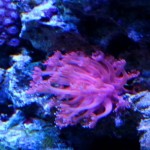
Flower Pot Coral
Scientific Name: Goniopora Sp.
Common Name: Flower Pot Coral, Goniopora, Sunflower Coral
Type of Coral: LPS (Large Polyp Stony Coral)
Lighting: Moderate
Flow: Moderate
Care Level: Moderate to Moderate / Difficult
Temperament: Peaceful to Semi-aggressive
Appearance
As the name suggests, the flower pot coral can look like a bouquet of flowers when all of it’s polyps are open and extended. The base of the colony will be rounded and the polyps will extend far beyond the base. The polyps will also have small tentacles on the ends giving the coral its flower like appearance. They can also have a verity of colors from greens, reds, and even yellows as examples.
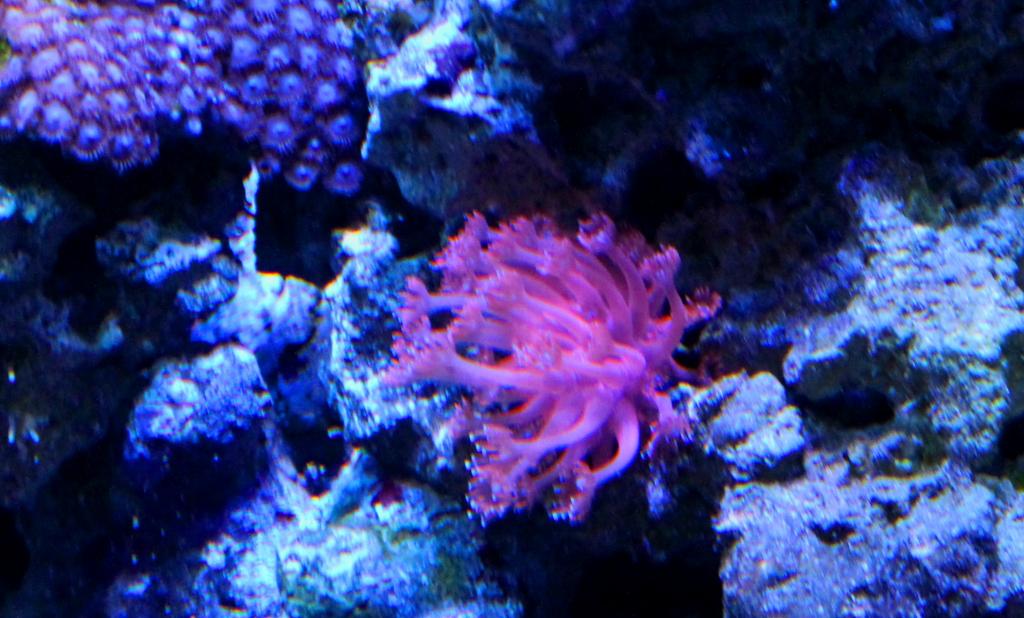
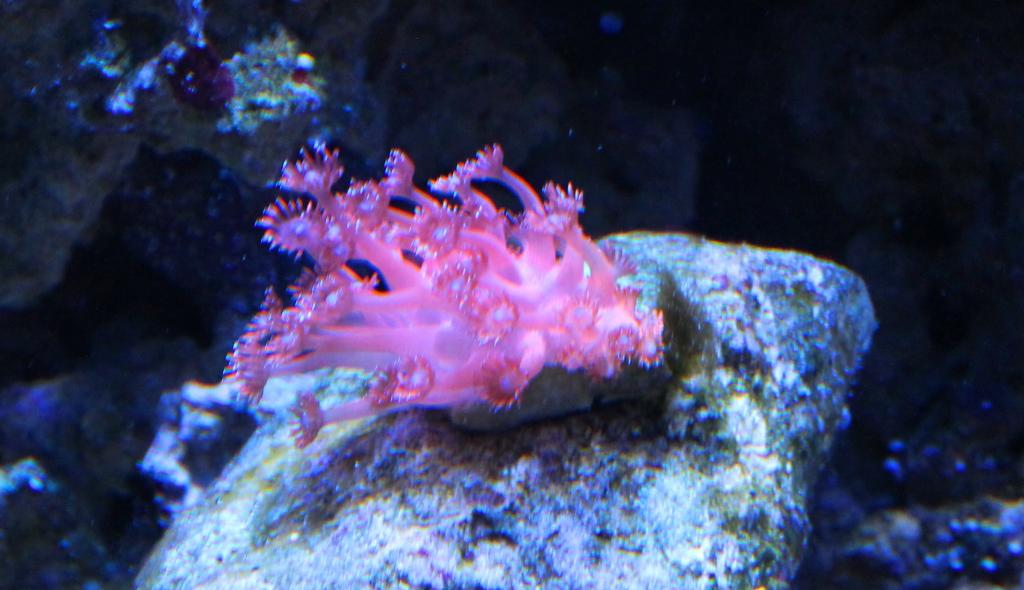
Water Conditions
The below link highlights typical water conditions flower pot corals, just as with most LPS, will require. As this is a moderately difficult coral to keep, you should ensure your dKH, Cal and Mag levels are maintained at all times with minimal nitrate and phosphate levels. As this coral also has a calcified skeleton (or base), it will consume at least some calcium from your water. In set-ups with a good amount of LPS corals, it is not uncommon to have to dose dKH and Cal in order to keep the water parameters in line. With only a few LPS corals, a good water change schedule may be enough to maintain your parameters as well as replenishing trace elements. Some studies have also suggested the flower pot coral may to better (long term) with slightly elevated nitrate levels between 1 and 5 ppm.
https://www.reefaquarium.com/2013/the-basics-of-marine-aquarium-water-parameters/
General Information
Flower pot corals should be added to mature aquariums. Provided all their requirements are met, they colony can grow to about 7 to 9 inches. This is a not a very aggressive LPS coral but it still can sting other corals. A distance of 3 or 4 inches from other corals would be a good idea.
Clownfish have also been known to host in flower pot corals in aquariums that do not have anemones. Although this will not harm the clownfish, this can sometimes stress the coral to the point where it could become damaged and prone to infections.
These corals can also benefit from the occasional feeding of micro-planton. Although the below link shows how to spot feed clams, the same process can be applied to spot feeding flower pot corals.
https://www.reefaquarium.com/2012/spot-feeding-marine-clams/
As with all corals, the exterior slime coating can be a skin irritant or even highly toxic to humans so please, handle all corals with care. I would recommend wearing rubber gloves whenever you handle corals
Fragging
Flower pot corals can be fragged.
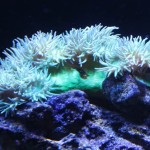
Duncan Corals
Scientific Name: Duncanopsammia Axifuga
Common Name: Duncan Coral, Whisker Coral, Daisy Coral,
Type of Coral: LPS (Large Polyp Stony Coral)
Lighting: Moderate
Flow: Moderate
Care Level: Moderate
Temperament: Peaceful to Semi-Aggressive
Appearance
Duncan corals will have a base that consists of an calcified skeleton structure covered in a green or pink colored thin layer of flesh. At the end of this structure will be individual fleshy heads with long polyps extending around the edges and a mouth in the center of the head. The heads will be a similar color to the base.
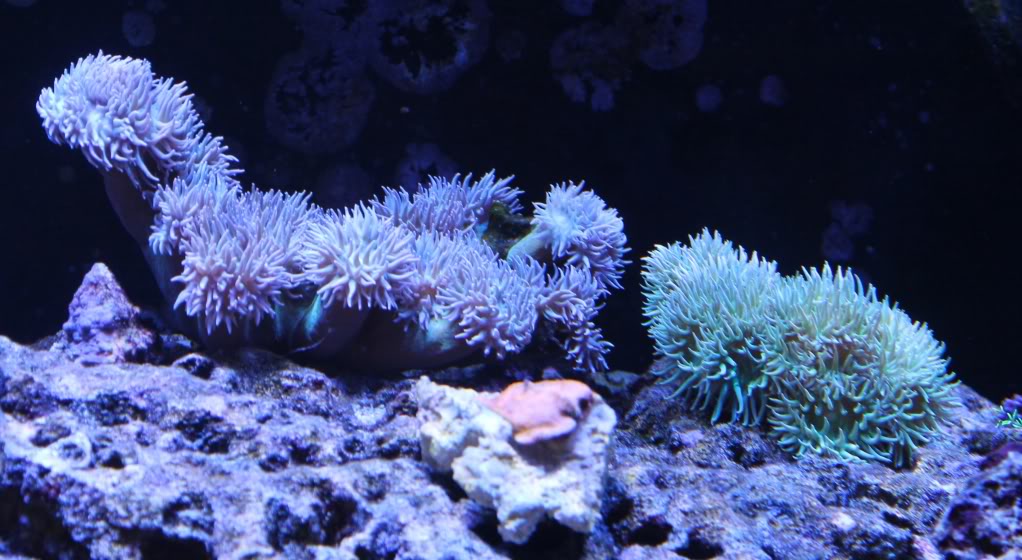
Water Conditions
The below link highlights typical water conditions Duncan corals, as with most LPS, will require. As this is a moderately difficult coral to keep, you should ensure your dKH, Cal and Mag levels are maintained at all times with minimal nitrate and phosphate levels. As this coral also has a calcified skeleton, it will consume calcium from your water. In set-ups with a good amount of LPS corals, it is not uncommon to have to dose dKH and Cal in order to keep the water parameters in line. With only a few LPS corals, a good water change schedule may be enough to maintain your parameters. In addition to the article in the below link, this coral can also benefit from maintaining strontium levels if you do not have a good water change routine using a very good quality salt.
https://www.reefaquarium.com/2013/the-basics-of-marine-aquarium-water-parameters/
General Information
Duncan corals, as with all other LPS corals, should be added to mature aquariums. Provided all their requirements are met, they can grow to a very large colony within a few short years. Unless you are planning to move or frag your duncan coral, you should give it as much as 20 inches of space in your tank.
The Duncan coral will release sweeper / feeder tentacles from its heads to collect food. This will mostly happen when the tanks lights are off. These tentacles can also sting and damage or kill other corals within reach, which is how the duncan coral will defend itself. What makes the duncan coral more peaceful than most LPS coral is that its sweeper tentacles are much shorter in comparison only measuring a few inches in length.
Although the duncan coral will get what it needs from the lighting in your tank, it can also benefit from micro plankton or manual feeding of small pcs of meaty foods placed directly on the mouths at the center of each head. Although manual feedings are not required, it will help to accelerate growth.
As with all corals, the exterior slime coating can be a skin irritant or even highly toxic to humans so please, handle all corals with care. I would recommend wearing rubber gloves whenever you handle corals
Fragging
Duncan corals can be fragged with very good success.
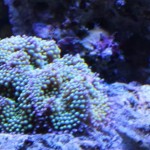
Ricordea Mushroom Corals
Scientific Name: Ricordea Florida
Common Name: Ricordea Mushroom, Anemone Mushroom
Type of Coral: Softie
Lighting: Moderate and Moderate to Low
Flow: Moderate
Care Level: Easy
Temperament: Semi-aggressive
Appearance
Ricordeas can also be found in a wide verity of colors and sizes making then a very great choice to add some color to any reef aquarium. It is also common to find some that have three different colors on them, one color around the edge of the cap, one color on the cap itself, and a third color in the center of the ricordeas. The surface of their cap looks like it is made up of small little balls giving them a very interesting structure. They also commonly range in size from ½ inch to 3 inches, but there are a few types of Ricordeas that do get larger. The below pictures are just a few examples.
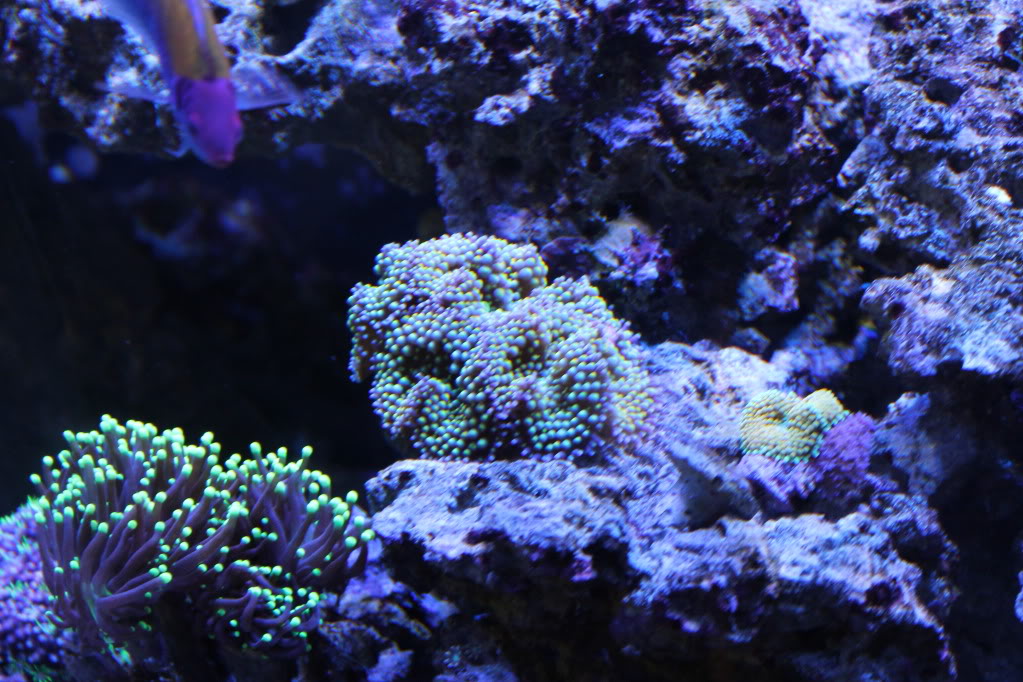
Water Conditions
The below link highlights typical water conditions Ricordeas will require. I have had the best luck with ricordeas when kept in water with 1 to 2 ppm of nitrate when lighting and flow requirements were meat and all other water parameters in line as described in the below link.
https://www.reefaquarium.com/2013/the-basics-of-marine-aquarium-water-parameters/
General Information
As Ricordeas do not have a calcified skeleton structure, they can be more tolerant of swings in the alkalinity, calcium, and magnesium when compared to other corals. However, they will not be very tolerance to swings in pH, Temp, or salinity which is no different than any other coral or fish. They are a very hardly coral making them a good choice for people new to the hobby. As with most other corals, Ricordeas have natural defense mechanisms to protect themselves. They have a chemical defense system based on stinging tentacle that will extend out from its cap. This can be harmfully to certain types of other soft corals and SPS corals. This makes it important to ensure you leave about 2 inches of space between your mushroom corals and other types of corals you may have in your tank. Ricordeas will do best when placed on your live rock in your tank.
As with all corals, the exterior slime coating can be a skin irritant or even highly toxic to humans so please, handle all corals with care. I would recommend wearing rubber glove whenever you handle corals
Fragging
Ricordeas can be easily fragged with very high success
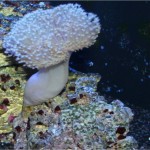
Long Polyp Leather Coral
Scientific Name: Sarcophyton SP
Common Name: Long Polyp Leather, Long Polyp Toadstool Leather
Type of Coral: Softie
Lighting: Moderate and Moderate to Low
Flow: Moderate and moderate to high
Care Level: Easy
Temperament: Semi-aggressive
Appearance
Generally speaking, leather corals are a soft skinned coral with visible polyps all over their skin. A leather coral can look one way in a aquarium and then (over time) look very different when placed in another tank based only on the water parameters, lighting and flow.
There will typically be a short light brown colored base with a head structure on top that will make it look a lot like a mushroom. It will have longer polyps on the head that are a little lighter color than the base and that can range in length of up to a inch. The polyps can be gold to light brown in color. The head of this coral can get as big as 5 inches so you should leave at least 8 to 9 inches of space all around this coral to help prevent any defensive response from this coral
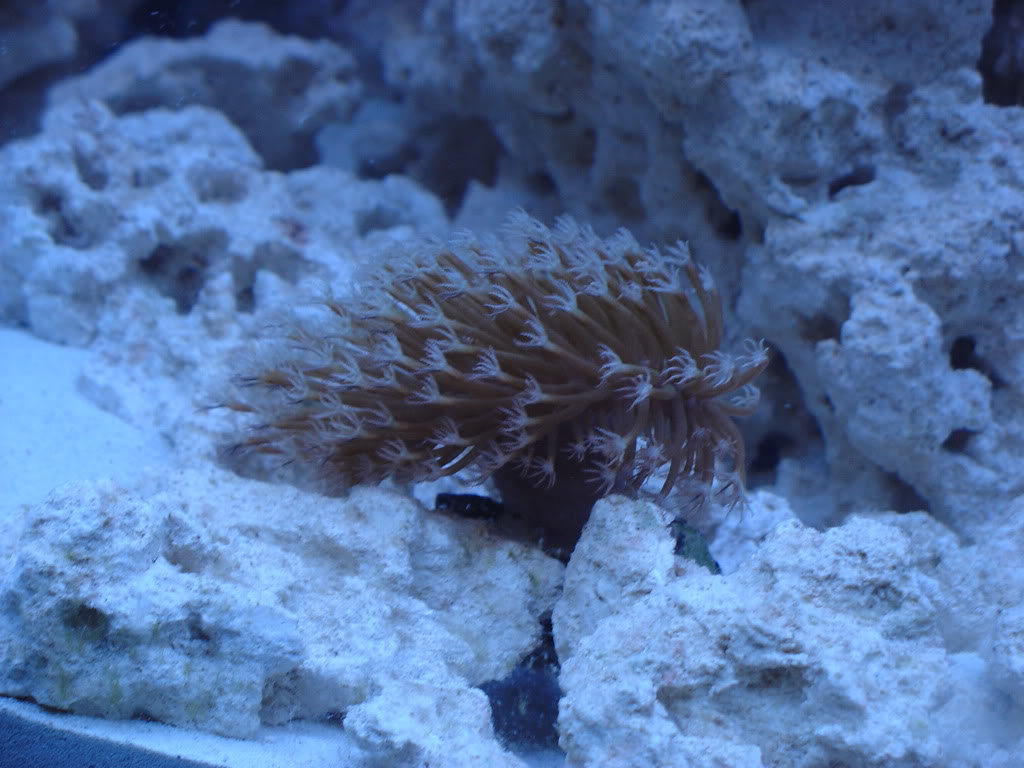
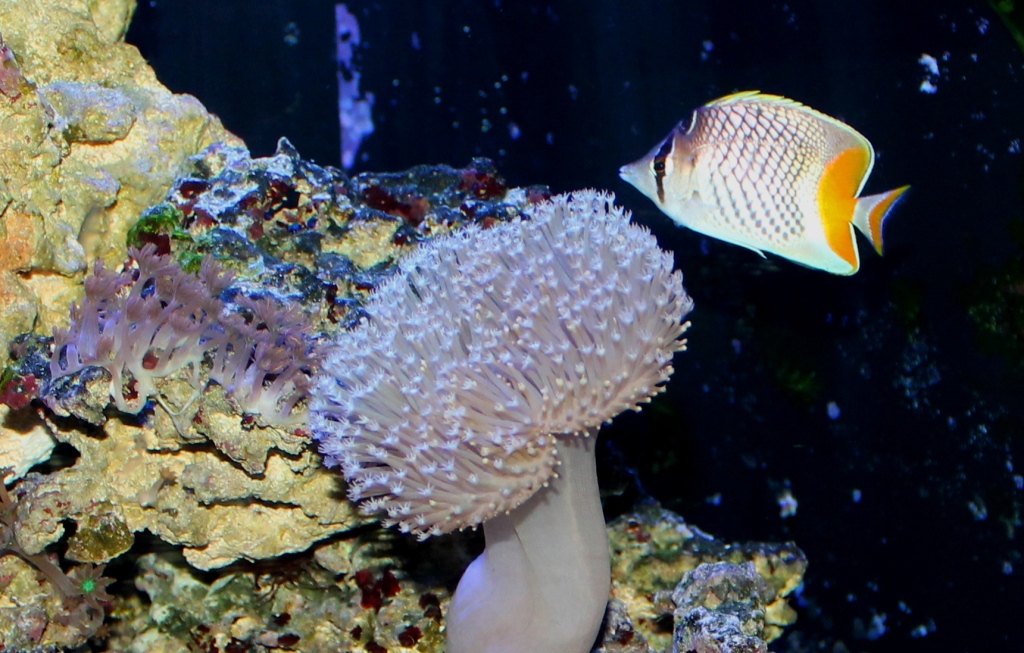
Water Conditions
The below link highlights typical water conditions this leather coral will require. I have had the best luck when they were kept in water with 1 to 2 ppm of nitrate when lighting and flow requirements were met and all other water parameters in line as described in the below link.
https://www.reefaquarium.com/2013/the-basics-of-marine-aquarium-water-parameters/
General Information
They do not have a calcified skeleton structure making them a little more tolerant of some water parameters like calcium. However, they will not be very tolerance to swings in pH, Temp, or salinity which is no different than any other coral or fish. They are a very hardly coral making them a good choice for people new to the hobby. Most leathers have a very effective defensive ability. Leathers commonly have the ability to sting other corals and some fish along with emitting chemicals to ward off other corals from entering their space. For this reason it is very important to understand how big your leather coral can get and plan for enough space between your leather coral and other corals. Just leaving a few inches may not always be enough as some leathers can get surprisingly large. It would also be a good idea to have some carbon in your set-up in case your leather will start to emit defensive chemicals. This is one coral that will be the least likely to be picked on by most fish in the hobby.
As with all corals, the exterior slime coating can be a skin irritant or even highly toxic to humans so please, handle all corals with care. I would recommend wearing rubber glove whenever you handle corals
Fragging
Leathers can be easily fragged with very high success
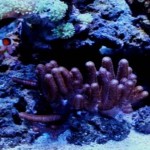
Finger Leather
Scientific Name: Sinularia SP
Common Name: Finger Leather.
Type of Coral: Softie
Lighting: Moderate and Moderate to Low
Flow: Moderate and moderate to high
Care Level: Easy
Temperament: Semi-aggressive
Appearance
Generally speaking, leather corals are a soft skinned coral with visible polyps all over their skin. A leather coral can look one way in a aquarium and then (over time) look very different when placed in another tank based only on the water parameters, lighting and flow.
The polyps will have a little different color than the base. These leathers can get up to 8 inches in height and around 12 inch wide along the base. This coral will need anywhere from 14 to 15 inches of space in a aquarium. Due to their size and coloring, many hobbyists have used them as a center pc coral. They can come in a variety of different colors.
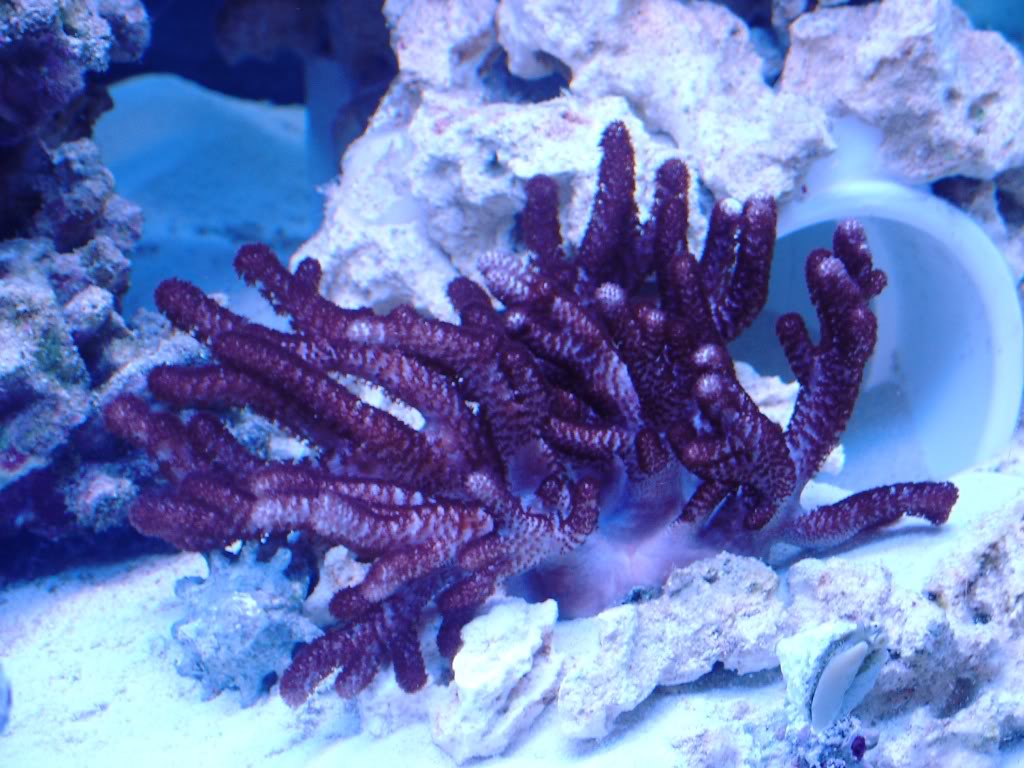
Water Conditions
The below link highlights typical water conditions this leather coral will require. I have had the best luck when they were kept in water with 1 to 2 ppm of nitrate when lighting and flow requirements were met and all other water parameters in line as described in the below link.
https://www.reefaquarium.com/2013/the-basics-of-marine-aquarium-water-parameters/
General Information
They do not have a calcified skeleton structure making them a little more tolerant of some water parameters like calcium. However, they will not be very tolerance to swings in pH, Temp, or salinity which is no different than any other coral or fish. They are a very hardly coral making them a good choice for people new to the hobby. Most leathers have some very effective defensive abilities. Leathers commonly have the ability to sting other corals and some fish along with emitting chemicals to ward off other corals from entering their space. For this reason it is very important to understand how big your leather coral can get and plan for enough space between your leather coral and other corals. Just leaving a few inches may not always be enough as some leathers can get surprisingly large. It would also be a good idea to have some carbon in your set-up in case your leather will start to emit defensive chemicals. This is one coral that will be the least likely to be picked on by most fish in the hobby.
As with all corals, the exterior slime coating can be a skin irritant or even highly toxic to humans so please, handle all corals with care. I would recommend wearing rubber glove whenever you handle corals
Fragging
This leathers can be easily fragged with very high success
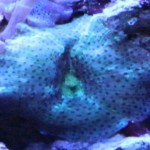
Mushroom Corals
Scientific Name: Actinodiscus SP
Common Name: Mushroom Corals
Type of Coral: Softie
Lighting: Moderate and Moderate to Low
Flow: Moderate
Care Level: Easy
Temperament: Semi-aggressive
Appearance
Mushrooms can also be found in a wide verity of colors and sizes making then a very great choice to add some color to any reef aquarium. They also commonly range in size from ½ inch to 2 inches, but there are a few types of mushrooms that do get larger. The below pictures are just a few examples.
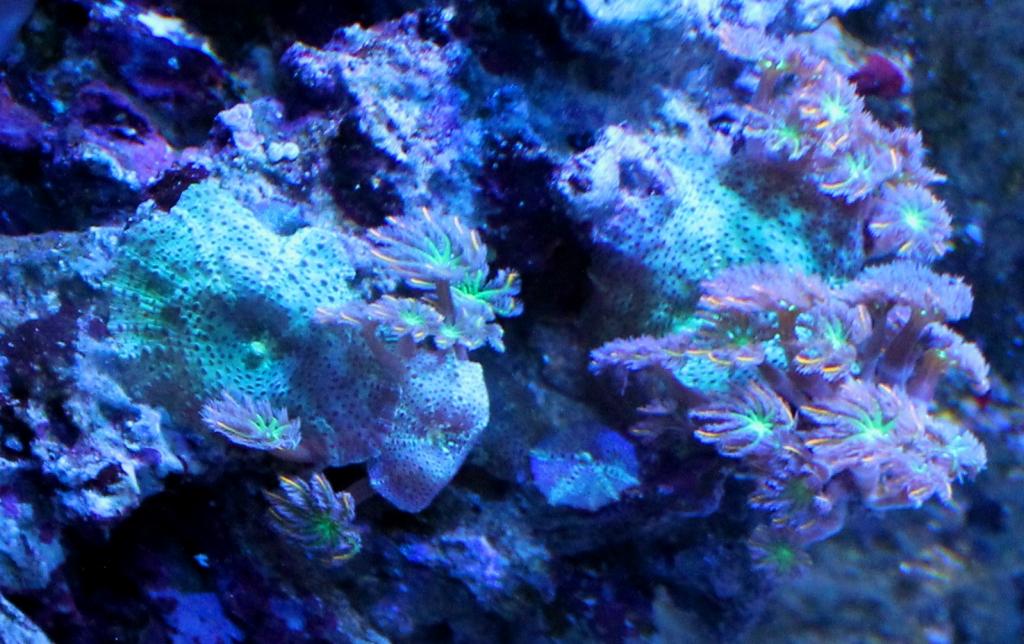
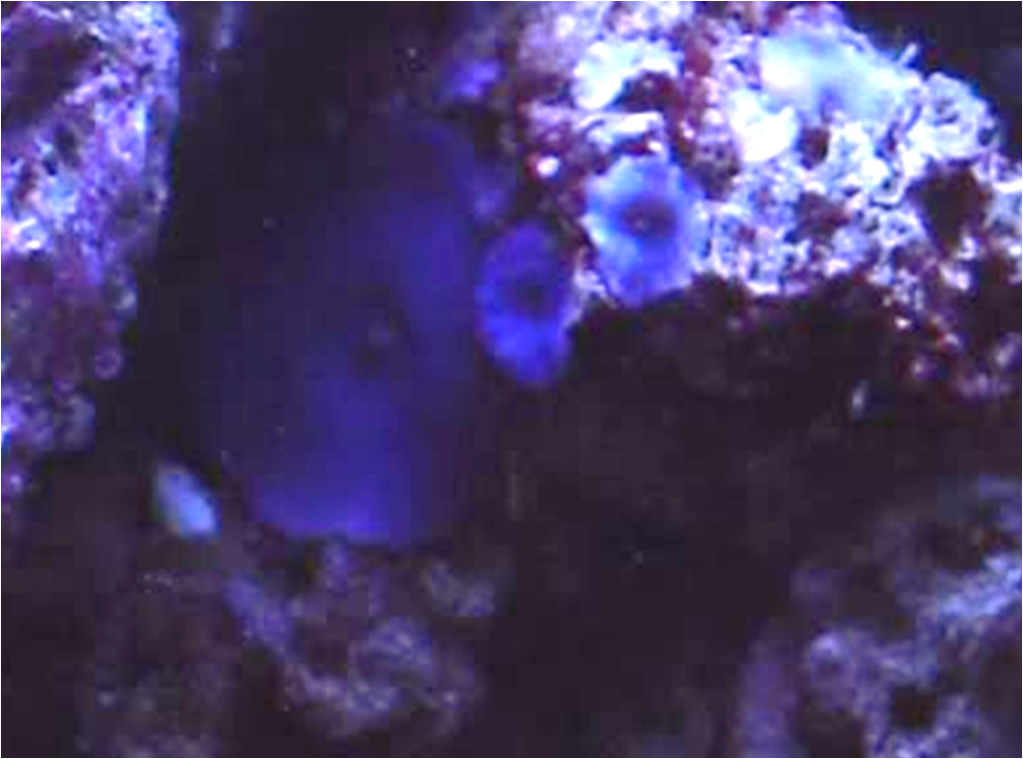
Water Conditions
The below link highlights typical water conditions mushrooms will require. I have had the best luck with mushrooms when kept in water with 1 to 2 ppm of nitrate when lighting and flow requirements were met and all other water parameters in line as described in the below link.
https://www.reefaquarium.com/2013/the-basics-of-marine-aquarium-water-parameters/
General Information
As mushroom do not have a calcified skeleton structure, they can be more tolerant of swings in the alkalinity, calcium, and magnesium when compared to other corals. However, they will not be very tolerance to swings in pH, Temp, or salinity which is no different than any other coral or fish. They are a very hardly coral making them a good choice for people new to the hobby. As with most other corals, mushrooms have natural defense mechanisms to protect themselves. They have a chemical defense system based on stinging tentacle that will extend out from its cap. This can be harmfully to certain types of other soft corals and SPS corals. This makes it important to ensure you leave about 2 inches of space between your mushroom corals and other types of corals you may have in your tank. Mushroom will do best when placed on your live rock in your tank.
As with all corals, the exterior slime coating can be a skin irritant or even highly toxic to humans so please, handle all corals with care. I would recommend wearing rubber glove whenever you handle corals
Fragging
Mushrooms can be easily fragged with very high success
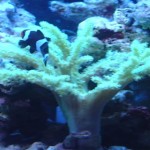
Green Nepthea Leather
Scientific Name: Nepthea SP
Common Name: Green Palua Neptha, Green Neptha Leather
Type of Coral: Softie
Lighting: Moderate and Moderate to Low
Flow: Moderate and moderate to high
Care Level: Easy
Temperament: Semi-aggressive
Appearance
Generally speaking, leather corals are a soft skinned coral with visible polyps all over their skin. A leather coral can look one way in a aquarium and then (over time) look very different when placed in another tank based only on the water parameters, lighting and flow.
The green nepthea will look like a little tree with fat branches and are green in color. The coloring can range from bright almost neon green to a darker green. The branches of the green nepthea leather coral will be covered in short polyps a little lighter in color than the base which, at times, can make it look almost “furry”. This coral should ideally get around 10 inches of tank space for its long term growth.
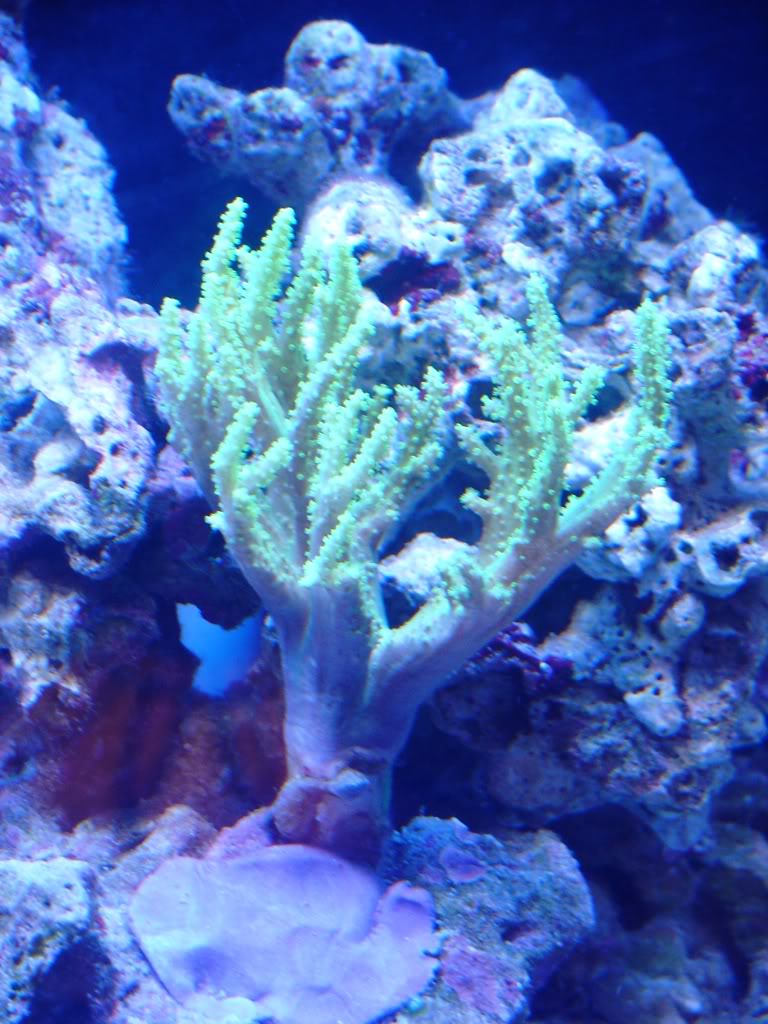
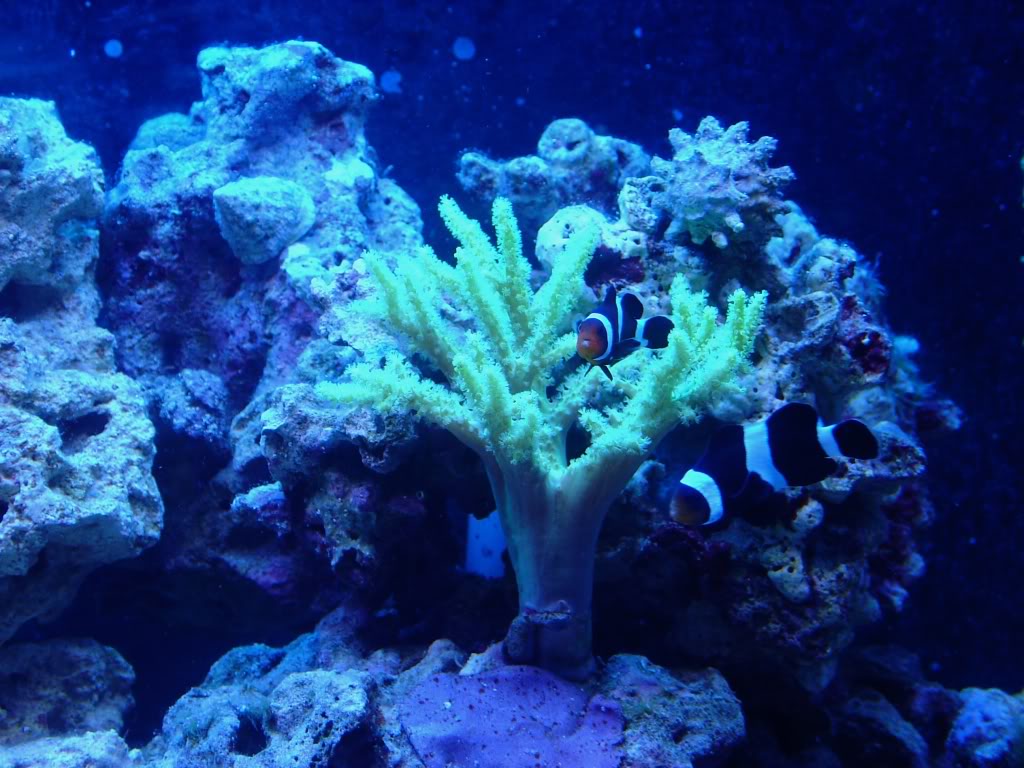
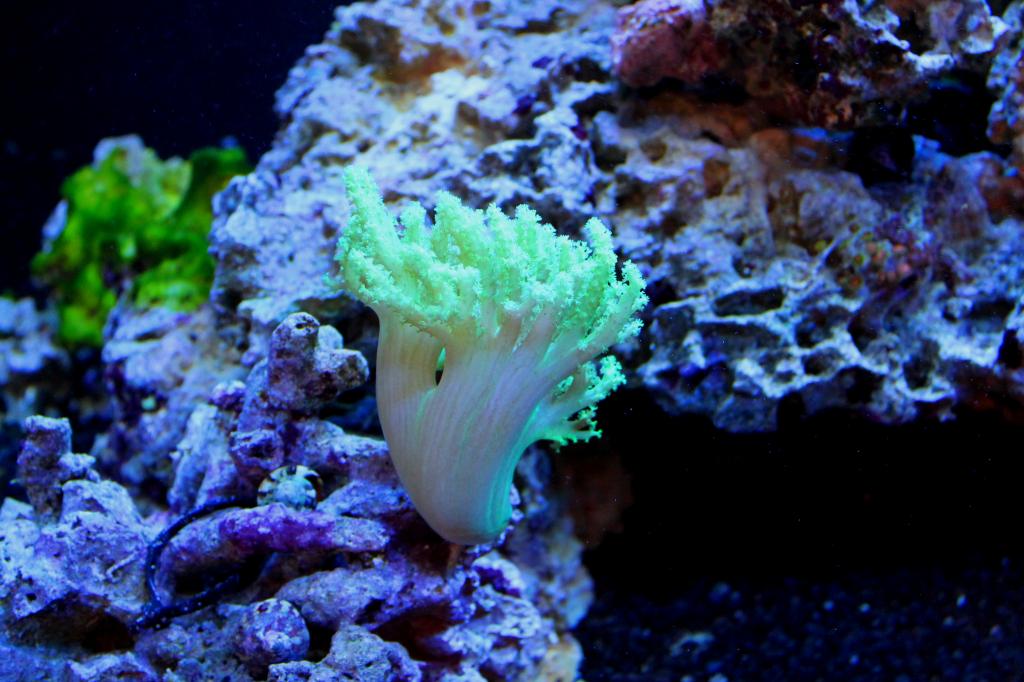
Water Conditions
The below link highlights typical water conditions a green nepthea leather coral will require. I have had the best luck when they were kept in water with 1 to 2 ppm of nitrate when lighting and flow requirements were met and all other water parameters in line as described in the below link.
https://www.reefaquarium.com/2013/the-basics-of-marine-aquarium-water-parameters/
General Information
They do not have a calcified skeleton structure making them a little more tolerant of some water parameters like calcium. However, they will not be very tolerance to swings in pH, Temp, or salinity which is no different than any other coral or fish. They are a very hardly coral making them a good choice for people new to the hobby. Most leathers have some very effective defensive abilities. Leathers commonly have the ability to sting other corals and some fish along with emitting chemicals to ward off other corals from entering their space. For this reason it is very important to understand how big your leather coral can get and plan for enough space between your leather coral and other corals. Just leaving a few inches may not always be enough as some leathers can get surprisingly large. It would also be a good idea to have some carbon in your set-up in case your leather will start to emit defensive chemicals. This is one coral that will be the least likely to be picked on by most fish in the hobby.
As with all corals, the exterior slime coating can be a skin irritant or even highly toxic to humans so please, handle all corals with care. I would recommend wearing rubber glove whenever you handle corals
Fragging
This Leather can be easily fragged with very high success
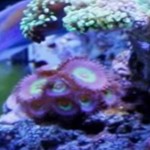
Button Polyps, or, Palys
Scientific Name: Protopalythoa sp.
Common Name: Palythoas, Palys, Button Polyps
Type of Coral: Softie
Lighting: Moderate and Moderate to Low
Flow: Moderate and Moderate to Low
Care Level: Easy
Temperament: Peaceful to Semi-aggressive
Appearance
These corals can come in a wide range colors and color combinations. While the heads can range in size from ½ to 2 inches, and the colony can grow at a fairly fast pace. The edges of the heads can have a different texture when compared with zoas, however, for the most part palys are very similar in appearance to zoas.
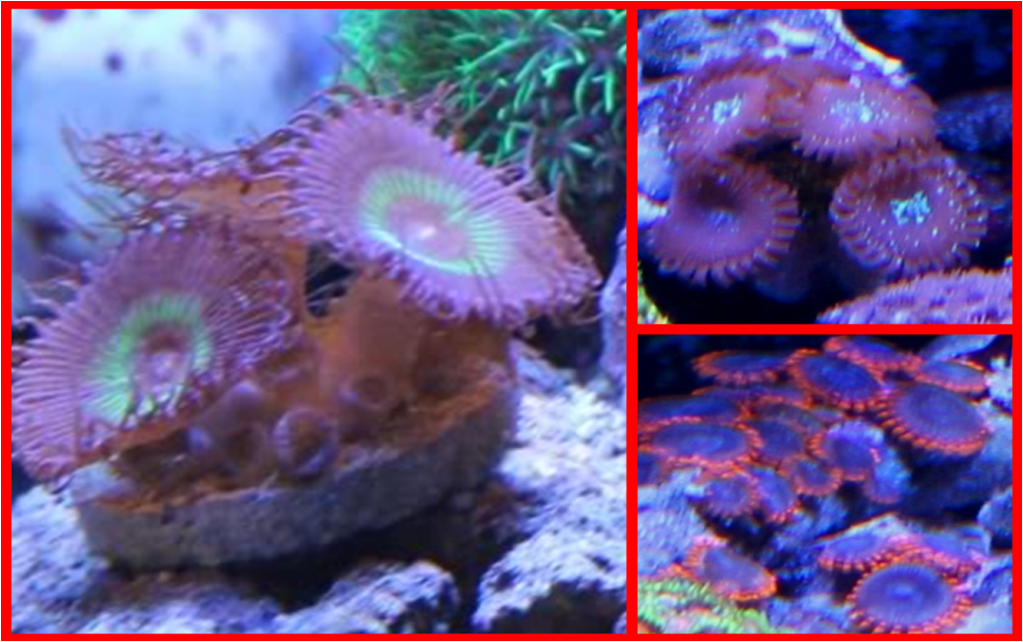
Water Conditions
The below link highlights typical water conditions palys will require. I have had the best luck when they were kept in water with 1 to 2 ppm of nitrate when lighting and flow requirements were meat and all other water parameters in line as described in the below link.
https://www.reefaquarium.com/2013/the-basics-of-marine-aquarium-water-parameters/
General Information
Palys are a colonial coral, meaning they form a colony of many individual polyps all connected together. As they do not have a calcified skeleton structure, they can be more tolerant of swings in the alkalinity, calcium, and magnesium when compared to other corals. However, they will not be very tolerant to swings in pH, Temp, or salinity which is no different than any other coral or fish.. This makes palys are a very hardy soft coral placing them amount the easier to keep corals and making them an excellent choice as corals for beginners. They have also been known to grow very fast, almost like an invasive coral. Palys are also the least aggressive when it comes to defensive abilities. They can quite frequently become damaged and even start losing heads when they fall victim to another coral’s sting or exposed to those toxins. In addition, the protective slime like coating that is on the palys can sometimes be a delicacy among the “coral nipping” fish. This corals typically dies when a fish removes the outer slim coating from the coral.
The exterior slime coating on some types of palys is among the most toxic to humans as compared to other common corals in the hobby. For this reason, please handle palys with care. I would recommend wearing rubber glove whenever you handle corals
Fragging
Palys can be easily fragged with very high success
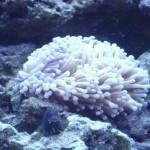
Torch Corals
Scientific Name: Euphyilla Glabrescens
Common Name: Torch Coral, Pom-pom coral
Type of Coral: LPS (Large Polyp Stony Coral)
Lighting: Moderate and Moderate to High
Flow: Moderate
Care Level: Moderate
Temperament: Semi-aggressive to Aggressive
Appearance
Torch corals will have a base that consists of an exposed calcified skeleton structure. At the end of this structure will be individual fleshy heads with long flowing polyps with lighter coloring at the tips. The heads can be a within a range of colors ranging from pink, green, gold, and brown. As this coral grows, the heads will split and the skeleton base will branch almost like a tree grows. These corals can sometimes be mistaken for a Hammer coral or a Frogspawn Coral. The appearance of the polyps on the heads will allow you to properly identify a torch coral.
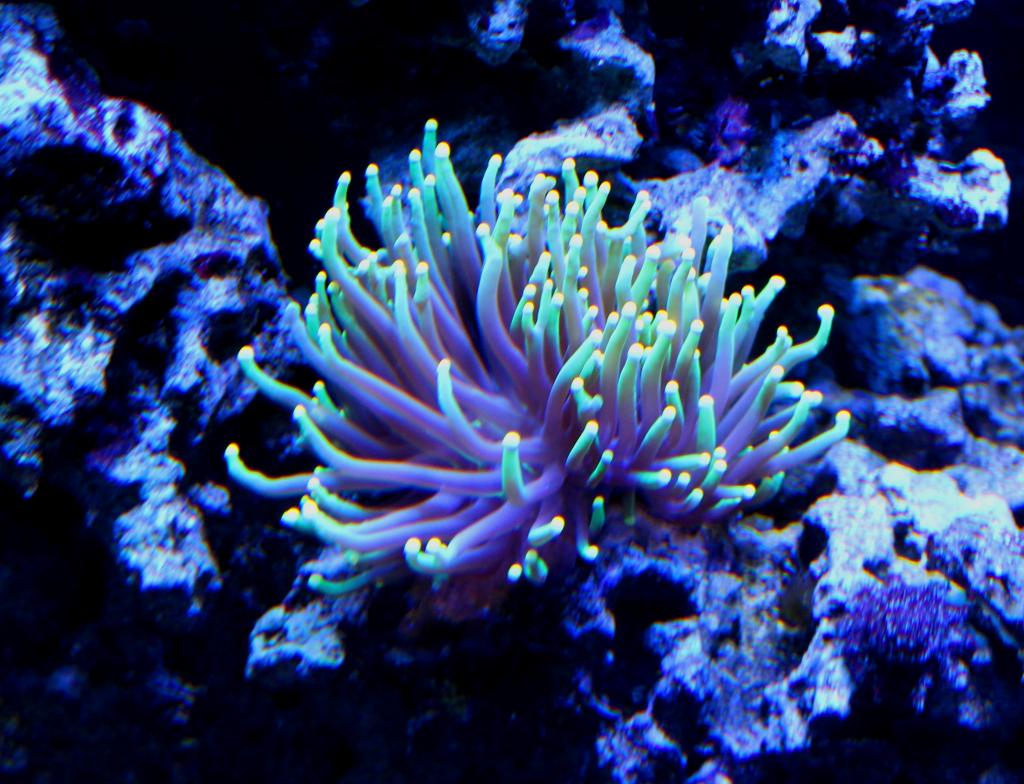
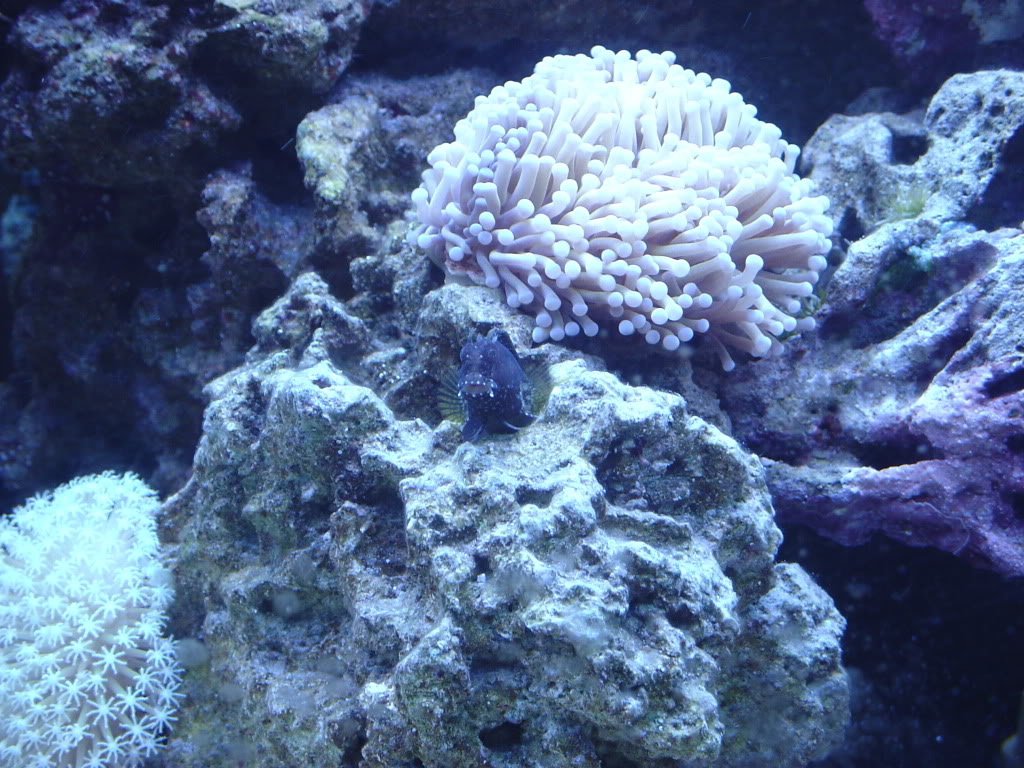
Water Conditions
The below link highlights typical water conditions torch corals, as with most LPS, will require. As this is a moderately difficult coral to keep, you should ensure your dKH, Cal and Mag levels are maintained at all times with minimal nitrate and phosphate levels. As this coral also has a calcified skeleton, it will consume calcium from your water. In set-ups with a good amount of LPS corals, it is not uncommon to have to dose dKH and Cal in order to keep the water parameters in line. With only a few LPS corals, a good water change schedule may be enough to maintain your parameters. In addition to the article in the below link, this coral can also benefit from maintaining strontium levels if you do not have a good water change routine using a very good quality salt.
https://www.reefaquarium.com/2013/the-basics-of-marine-aquarium-water-parameters/
General Information
Torch corals, as with all other LPS corals, should be added to mature aquariums. Provided all their requirements are met, they can grow to a colony about the size of your average basket ball within a few short years. Unless you are planning to move or frag your torch coral, you should give it as much as 30 inches of space in your tank.
The torch coral will release long sweeper / feeder tentacles from its heads to collect food. This will mostly happen when the tanks lights are off. These tentacles can also sting and damage or kill other corals within reach, which is how the torch coral will defend itself. This is what makes the torch more of an aggressive coral as the tentacles can extend as much as 6 to 7 inches beyond the heads.
Although the torch coral will get what it needs from the lighting in your tank, it can also benefit from micro plankton or manual feeding of small pcs of meaty foods placed directly on the mouths at the center of each head. Although manual feedings are not required, it will help to accelerate growth.
Clownfish have also been known to host in torch corals in aquariums that do not have anemones. Although this will not harm the clownfish, this can sometimes stress the coral to the point where some of its heads could die off.
As with all corals, the exterior slime coating can be a skin irritant or even highly toxic to humans so please, handle all corals with care. I would recommend wearing rubber gloves whenever you handle corals
Fragging
Torch corals can be fragged with very good success.
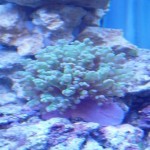
Frogspawn Coral
Scientific Name: Euphyilla Paradivisa
Common Name: Frogspawn Coral
Type of Coral: LPS (Large Polyp Stony Coral)
Lighting: Moderate and Moderate to High
Flow: Moderate and Moderate to High
Care Level: Moderate
Temperament: Semi-aggressive to Aggressive
Appearance
Frogspawn corals will have a base that consists of an exposed calcified skeleton structure. At the end of this structure will be individual fleshy heads with polyps on it. The tips of the polyps will typically be a lighter color when compared to the rest of the polyp. The heads can be a within a range of colors ranging from green, pink, gold, and brown. As this coral grows, the heads will split and the skeleton base will branch almost like a tree grows. The polyps on the heads of this coral will look almost like a mass of frog eggs which is where its common name originated from. These corals can sometimes be mistaken for a Torch coral or a Hammer Coral. The appearance of the polyps on the heads will allow you to properly identify a frogspawn coral.
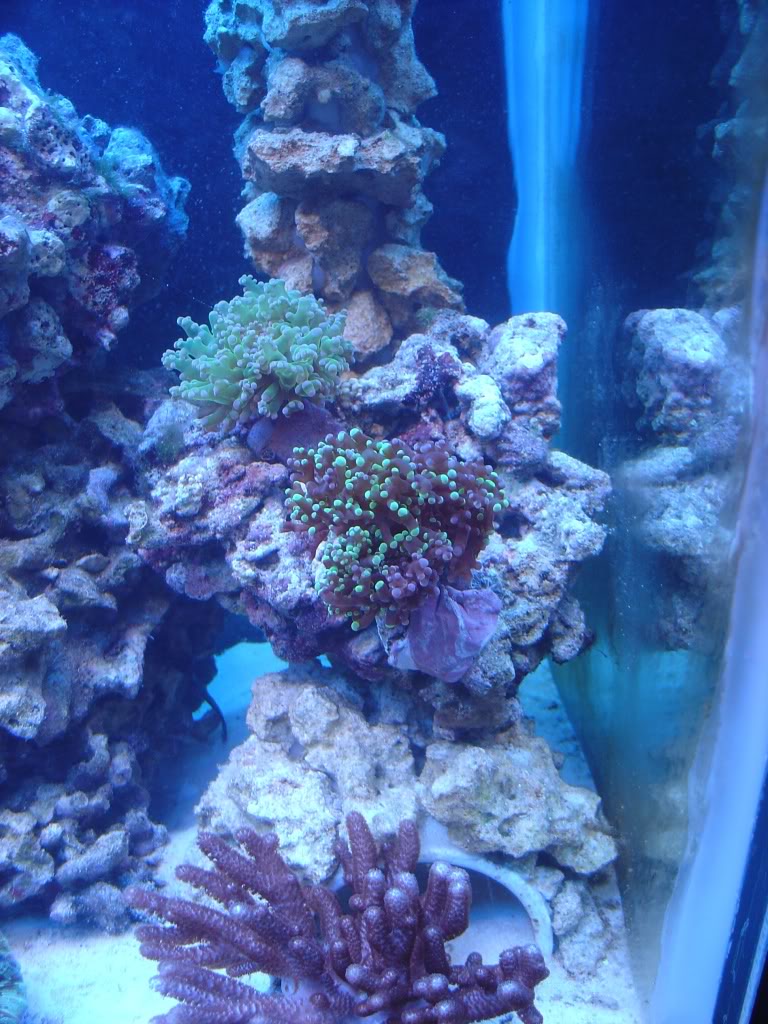
Water Conditions
The below link highlights typical water conditions frogspawn corals, as with most LPS, will require. As this is a moderately difficult coral to keep, you should ensure your dKH, Cal and Mag levels are maintained at all times with minimal nitrate and phosphate levels. As this coral also has a calcified skeleton, it will consume calcium from your water. In set-ups with a good amount of LPS corals, it is not uncommon to have to dose dKH and Cal in order to keep the water parameters in line. With only a few LPS corals, a good water change schedule may be enough to maintain your parameters. In addition to the article in the below link, this coral can also benefit from maintaining strontium levels if you do not have a good water change routine using a very good quality salt.
https://www.reefaquarium.com/2013/the-basics-of-marine-aquarium-water-parameters/
General Information
Frogspawn corals, as with all other LPS corals, should be added to mature aquariums. Provided all their requirements are met, that can grow to a colony about the size of your average basket ball within a few short years. Unless you are planning to move or frag your frogspawn coral, you should give it as much as 30 inches of space in your tank.
The frogspawn coral will release long sweeper / feeder tentacles from its heads to collect food. This will mostly happen when the tanks lights are off. These tentacles can also sting and damage or kill other corals within reach, which is how the frogspawn coral will defend itself. This is what makes the frogspawn more of an aggressive coral as the tentacles can extend as much as 6 to 7 inches beyond the heads.
Although the frogspawn coral will get what it needs from the lighting in your tank, it can also benefit from micro plankton or manual feeding of small pcs of meaty foods placed directly on the mouths at the center of each head. Although manual feedings are not required, it will help to accelerate growth.
As with all corals, the exterior slime coating can be a skin irritant or even highly toxic to humans so please, handle all corals with care. I would recommend wearing rubber gloves whenever you handle corals
Clownfish have also been known to host in frogspawn corals in aquariums that do not have anemones. Although this will not harm the clownfish, this can sometimes stress the coral to the point where some of its heads could die off.
Fragging
Frogspawn corals can be fragged with very good success.